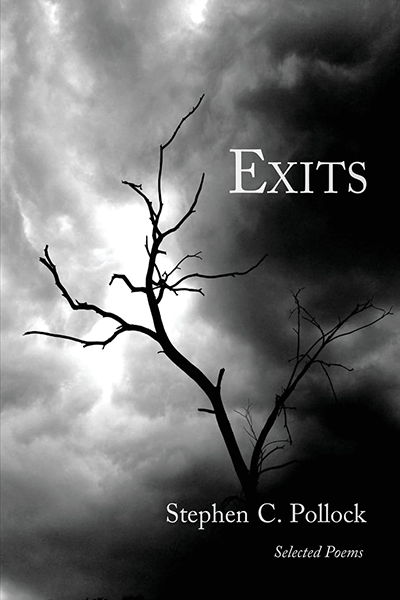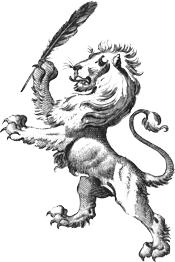 Exits
Exits
Stephen C. Pollock's elegant poetry collection Exits is held together by supple formal inventiveness and a thematic focus on mortality. This universally humbling subject inspires not only melancholy but moments of humor and awe at our small place in the natural world.
Exits continues a positive trend of illustrated poetry books in the North Street entry pool. Compared to traditional small presses on a tight budget, self-published and hybrid authors may opt for the extra cost of printing books with photos and artwork. When done right, these visual pauses between poems allow the words to resonate more deeply.
One of the most effective photos in Exits was the metal sculpture of a moon against autumn woods accompanying "Waning Crescent". Its weather-beaten sharpness fit the poem's central conceit that the moon looked like a cute fingernail to a four-year-old, but like Death's scythe to her aging father. The abandoned, moss-furred railroad tracks across from "Locomotion" similarly juxtaposed vitality and decline, a counterpart to the poem's gallows humor about whether death is a gateway to knowledge or oblivion. Only one way to find out...
The conceptual wordplay is what really won me over to this book. Pollock riffs on other meanings of words that come up in medical settings, creating fresh extended metaphors for the body's vulnerabilities and the spiritual questions they provoke. The sonnet "Nasal Biopsy" begins:
Nurse says there's a mass. I hear
a requiem, see gothic arches where
alae and columella frame a nare
and its twin.
In "Syringe", he interweaves the myth of Syrinx, a nymph who turned into a hollow reed to escape lustful Pan, and the narrator receiving injection treatments for multiple sclerosis. The nymph's ghostly beauty appears to the semi-conscious patient, "a synthesis of moons/sheathed in halos of myelin film".
If I could reorganize this collection, I wouldn't start off with "Arachnidæa: Line Drawings" and "Seeds". A longer poem is less inviting as an introduction. The two poems' extended metaphors of spiders and dying sunflowers, respectively, are over-familiar images for death. The accompanying photos are pretty but also among the more generic ones in the book.
The book was produced by Windtree Press, which describes itself as a publishing collective for independent authors to self-publish under a single press name and cross-promote each other. Judging by this one example, they know how to put out a nice-looking book without typos and with good-quality image reproduction. The font was crisp and the poems were centered attractively on the page. It was a pleasure to read a collection that was just the right length, neither flimsy nor overstuffed. Exits shows Pollock to be a mature poet in the quality of his insights and mastery of poetic form.
Read an excerpt from Exits (PDF)
Buy this book on Amazon.








